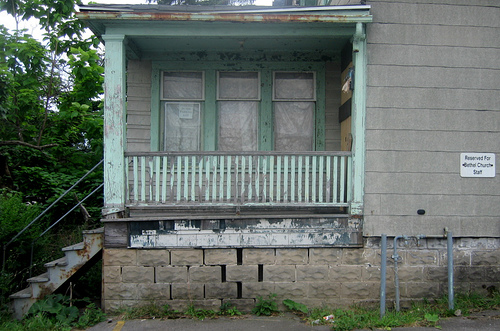Congratulation on finally shaking that doubt in the back of your mind when it comes to making improvements to your home by yourself. All that HGTV and the workbench in the corner of the garage for small DIY projects has you confident you can take on a bigger task. Whether you are deciding to turn some of that unused basement into an extra bedroom or finally adding that deck for outdoor summer fun there are several potential pitfalls to avoid. Most of them seem like no brainers but when DIYers commit building hubris, the shortcuts taken can cost them thousands or even their home.
Building Without a Permit
We totally get that you’ve been working with tools your whole life with dad in the workshop, but that does not mean you know up to date building codes. These codes could mean your improvements might not pass home inspection, decrease your home’s value when trying to sell, or even lead to being sued by the next owners. Many home renovations require a permit, and while they do cost money, it is money well spent. An added bonus to getting a permit is when you do, your project will be inspected. Don’t think of visits from a building inspector as adversarial; rather, they are opportunities to learn about construction techniques and materials. A building inspector can be a valuable helpmate for the DIYer.
Improper Bathroom Ventilation
Improvements to a bathroom can be a great way to boost your home’s value. For older bathrooms or those built without a ventilation fan, adding a fan can be an easy improvement to make. Unfortunately, many DIYers get to the tail end of the project and forget to finish the job. When adding a ventilation fan, the exhaust duct must vent all the way out of the home, not just to the attic. Not venting the warm, moisture filled air out of the home and only into the attic can be costly. The bathroom steam venting into the attic can cause rotting in the roof framing and sheathing, and may not properly rid the bathroom of moisture, leading to mold and mildew. In addition, it is wise to opt for the an insulated duct rather than the less expensive uninsulated duct.
Faulty Electrical Work
Many of the mistakes made by DIYers are dangerous, but few are as dangerous as poor electrical work. If you are determined to do your own wiring on a project, it is critical that you take the utmost precautions and make sure all wiring is done properly. Ground-fault circuit interrupter (GFCI) protection is now required for outlets near the presence of water such as the kitchen, bathroom, garage, and all outdoor circuits. It cuts power to a circuit if it detects a current change. A GFCI tester (available for about $15) can detect wiring problems like open grounds or reverse polarity, and protects against electrical shocks. Once the work starts, common wiring mistakes include using the wrong size amps. Improper wire splicing or not using a junction box when splicing wires is another shortcut/mistake to avoid.
Improper Deck Fastening to the Rest of the House
As DIY projects go, adding a deck can be the perfect one to start because it is a pretty straightforward process, and the materials needed are rather simple. The only real problem occurs when it comes to fastening that lovely new deck to your home. One common mistake is using plain old nails to secure ledging instead of more advanced fastening devices. Another common mistake is improper or missing flashing at deck joints. Flashing when installed correctly will defend your deck from water seeping into the wood and rotting. Not having it puts your deck at risk for a collapse, especially when loaded up with furniture and people.
Improper Fence Height
A little privacy can be great, and a fence is an easy way to accomplish it. They also help corral pets who like to play outside and allows owners to let them roam without a leash. Fences are also often a point of contention between neighbors and, as a result, one of the more likely complaints to a local building authority. Most problems arise from owners who build their fences to high. Most codes limit fences to a height of 6 feet in the back of a house and 42-48 inches in the front. If your fence is too high a complaint could bring a building official to your home with orders to tear it down.
Brian Levesque is always working on home improvement projects and various other projects to help improve his home. However, he realizes that he doesn’t always know what he needs to about his home, so when he needs to do an inspection for gas lines or anything else that may be hidden he recommends turning to weinspecttexas.com. You can learn more about Brian on Google+.





